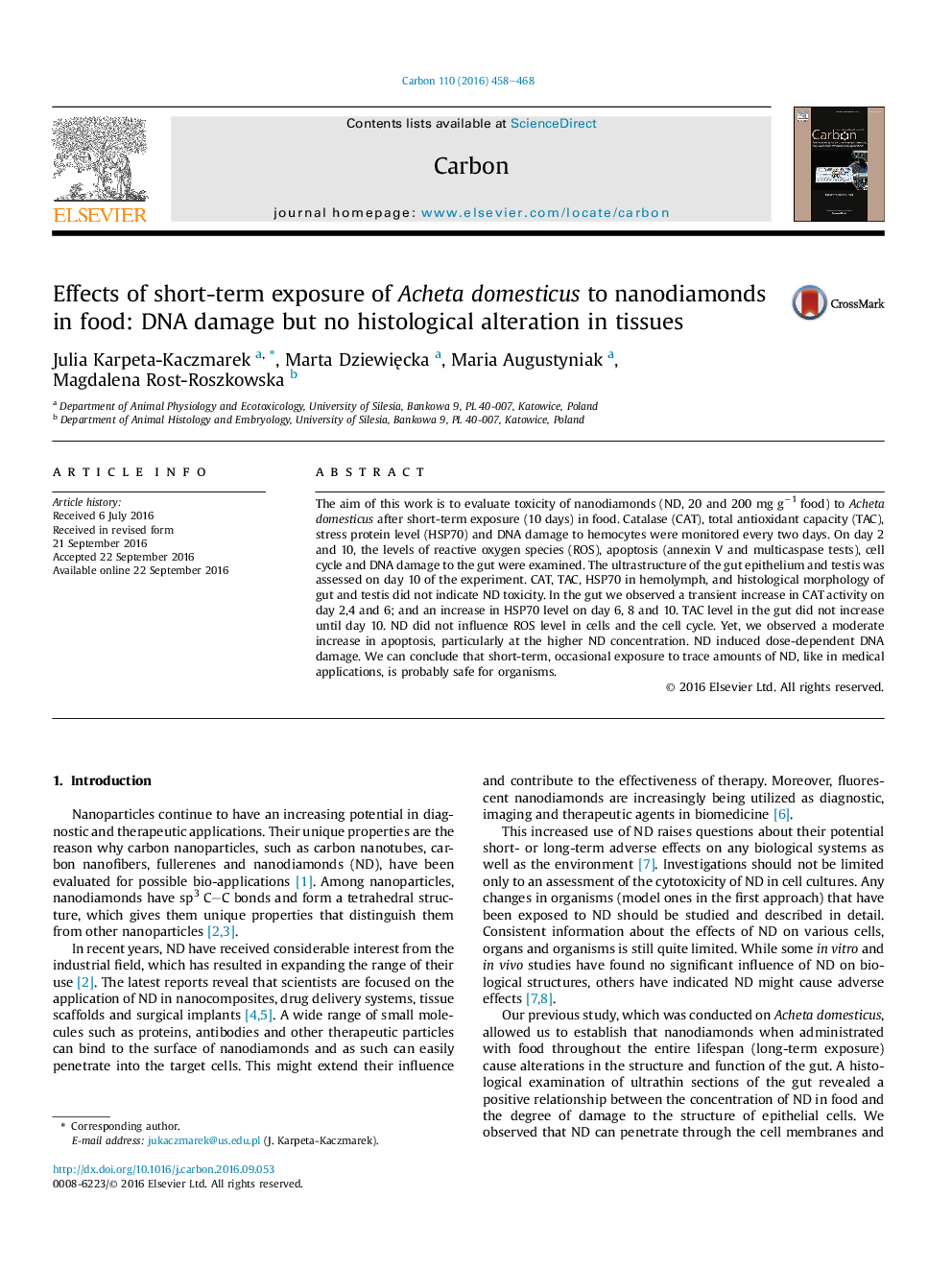| کد مقاله | کد نشریه | سال انتشار | مقاله انگلیسی | نسخه تمام متن |
|---|---|---|---|---|
| 5432740 | 1508837 | 2016 | 11 صفحه PDF | دانلود رایگان |

- The in vivo toxicity of ND was measured in A. domesticus after short-term exposure.
- Oxidative stress and genotoxicity caused by ND was dose- and time-dependent.
- Short-term exposure did not cause histological alterations in the gut or testis.
- ND could be considered as a relevant material in the medical field.
The aim of this work is to evaluate toxicity of nanodiamonds (ND, 20 and 200 mg gâ1 food) to Acheta domesticus after short-term exposure (10 days) in food. Catalase (CAT), total antioxidant capacity (TAC), stress protein level (HSP70) and DNA damage to hemocytes were monitored every two days. On day 2 and 10, the levels of reactive oxygen species (ROS), apoptosis (annexin V and multicaspase tests), cell cycle and DNA damage to the gut were examined. The ultrastructure of the gut epithelium and testis was assessed on day 10 of the experiment. CAT, TAC, HSP70 in hemolymph, and histological morphology of gut and testis did not indicate ND toxicity. In the gut we observed a transient increase in CAT activity on day 2,4 and 6; and an increase in HSP70 level on day 6, 8 and 10. TAC level in the gut did not increase until day 10. ND did not influence ROS level in cells and the cell cycle. Yet, we observed a moderate increase in apoptosis, particularly at the higher ND concentration. ND induced dose-dependent DNA damage. We can conclude that short-term, occasional exposure to trace amounts of ND, like in medical applications, is probably safe for organisms.
Journal: Carbon - Volume 110, December 2016, Pages 458-468